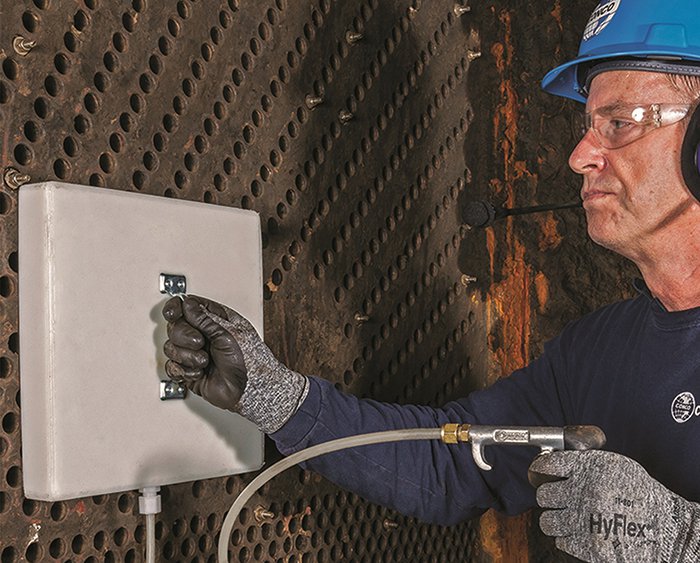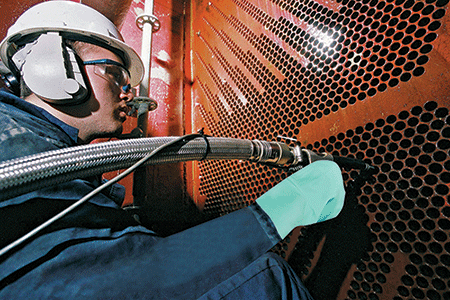NOTE: The sponsor of this content may contact you with more information on this topic. Click here to opt out from sharing your email address with this sponsor. (This link will not unsubscribe you from any other BIC email list).
It’s usually not until a power outage that most of us are reminded of how much we enjoy electricity, its simple ease of use, and the countless electronic devices it powers. We ultimately owe the seamless flip of the light switch to electromagnetic induction (EM induction), the phenomenon in which electric voltage is produced when a conductor is placed in a changing magnetic field. In 1830, British scientist Michael Faraday observed that when he moved a magnet in and out of a coil it induced an electric current, discovering a way of producing voltage using only the force of a magnetic field. Electricity generation through magnetism has huge worldwide commercial importance and the application of EM induction contributes to nearly every aspect of modern life, from kitchen appliances and cell phones to satellites and turbines.
EM induction is also the underlying principle behind eddy current technology. Eddy current testing is a well-established method of non-destructive testing that is used to examine non-ferrous/non-magnetic materials such as heat exchanger tubes in refineries, power generation plants and other industrial facilities. In an eddy current probe, an alternating current flows through a wire coil and generates an oscillating magnetic field. When the probe and its magnetic field are brought close to a conductive material like a heat exchanger or condenser tube, a circular flow of electrons known as an eddy current will begin to move through the metal, generating its own magnetic field. Any changes in the thickness of the metal tube or defects like cracking will interrupt or alter the amplitude and pattern of the eddy current magnetic field, and these data points identify changes in the tube metal being tested.
Eddy current testing reveals discontinuities in tubing, provides plant engineers with an accurate  assessment of a unit’s condition, and is a tool for predicting the remaining useful life of the tubes. Along with heat exchanger and condenser tube cleaning and leak detection applications, many refineries with aging units include eddy current testing in plant maintenance programs in an overall effort to maximize the efficient life of their units. The petrochemical refinery process industry is but one of many sectors that benefit from eddy current and other non-destructive testing applications. Common applications of eddy current testing outside of the refinery process are inspections of aircraft, automotive components and machined parts to search for surface and subsurface cracks and corrosion.
assessment of a unit’s condition, and is a tool for predicting the remaining useful life of the tubes. Along with heat exchanger and condenser tube cleaning and leak detection applications, many refineries with aging units include eddy current testing in plant maintenance programs in an overall effort to maximize the efficient life of their units. The petrochemical refinery process industry is but one of many sectors that benefit from eddy current and other non-destructive testing applications. Common applications of eddy current testing outside of the refinery process are inspections of aircraft, automotive components and machined parts to search for surface and subsurface cracks and corrosion.
Eddy current testing can be a powerful tool in a refinery’s maintenance program. Every year in the U.S. there are an estimated 7,000 plant outages attributed to tube failures, and such outages are expensive and disruptive. Regular tube inspections can detect failing tubes before they become catastrophic, and minimize the losses associated with plant unavailability. Early detection of potential failure mechanisms enables plants to develop operation strategies, do preventative maintenance, and more accurately budget for equipment repair and replacement because the remaining useful life of the unit is better understood.
There are many variables that will influence the capabilities of an eddy current test. In any given inspection, the probe that is used will impact resolution and the data that is collected will depend on the characteristics of the equipment being tested. While the permeability and conductivity of heat exchanger or condenser tubing are beyond the control of the eddy current technician, appropriate choices about the coil size, coil type and the test frequencies that will be used will ensure that the most conclusive data is collected. Other factors that influence the eddy current inspection process are the calibration standard, fill factor, tube cleanliness and probe speed. As is often the case, successful and accurate eddy current analysis is often based on the expertise of the analyst.
Single frequency vs. multiple frequencies
With eddy current testing, more is better. Frequencies, that is. The American Society of Mechanical Engineers (ASME) code on eddy current testing requires only the use of the prime frequency needed to obtain a desired response, but allows for the use of additional frequencies. The use of multiple testing frequencies is an essential because it allows for complete penetration of the tube wall from various perspectives.
Multiple frequencies are required to gain accurate and detailed data on suspected defects, and to maximize the ability of the technology to better detect, measure and confirm flaws in all areas of a tube wall. Subsequent frequencies each have their strengths for detection and allow for signal mixing to eliminate unwanted interference like tube support plate signals. Today’s eddy current instruments have the capacity to employ eight or more frequencies, but, more commonly, analysts are utilizing a minimum of four.
Good preparation: The importance of clean tubes 
For an accurate and successful eddy current inspection of your heat exchanger or condenser tubes, effective tube cleaning must first be performed. Fill factor is the volume at which the eddy current probe occupies the inner diameter of the tube being tested, and is an important variable in the quality of an eddy current inspection. Fill factor is reduced when tubes are not clean. For an inspection to have high accuracy and repeatability, the eddy current probe must be able to achieve a fill factor of 85 percent or higher, with the probe occupying as much of the diameter of the tube as possible. High fill factor provides better magnetic coupling with the tube and superior data acquisition. Fill factor that is too low will reduce the quality of the data and increase the likelihood of false signals and masked defects. Along with fill factor, dirty tubes increase the signal to noise ratio that is a vital component of the eddy current inspection. Whatever cleaning method is utilized, condenser and heat exchanger tubes should be cleaned as close to the tube surface as possible. The silver lining for the refinery or plant is that the return on investment associated with tube cleaning is significant. Tube fouling and corrosion can cause major loss of heat transfer, and if ignored, even tube failure.
In preparation for eddy current testing, a common practice is for plants to contract with a tube cleaning specialist who will insert tube cleaners that are propelled using pressurized water; the cleaners are shot through the tubes, flushing them clean of debris and obstructions and then ready for eddy current testing. Typically, metal tube cleaners can be used eight to 12 times before they become ineffective, so an investment in mechanical cleaners will usually be recouped quickly.
Once the condenser or heat exchanger tubes have been cleaned and are prepared for testing, a certified non-destructive testing technician chooses one of a variety of probes that is appropriate for the testing application. The interaction of the eddy currents flowing through the tube metal and the magnetic field of the coil will provide the valuable data points that tell the story of the tube’s condition. Changes or variations in the eddy currents are caused by defects in the tube wall, such as near-surface cracks and inconsistencies in metal thickness. The eddy current instrument records the pattern of variations and they are analyzed to draw conclusions about the condition of the tubes. Over time, results can be compared and any trends or progression in the defects can be observed, which will guide maintenance decisions.
Remote field testing
While both eddy current and remote field-testing (RFT) are non-destructive testing methods that rely on the science of electromagnetic induction, they are very different in operation and application. Eddy current testing relies on direct coupling between the inspection coil and the test material, and is effective with non-ferrous tubing, such as copper, brass and titanium.
RFT is a method to inspect ferrous tubes, such as carbon steel and ferritic stainless steel, and was developed to overcome the permeability effects in ferromagnetic tubing. The inspection process uses slower probe speeds and it is less sensitive to local defects than conventional eddy current testing, yet still providing valuable information on tube condition. Higher fill factors are not as critical in RFT as in eddy current testing, with 60-70 percent fill factor being commonplace. Although RFT can detect both internal and external defects, it cannot distinguish between them.
Tube plugging
If the results of eddy current or remote field inspections indicate that a tube is so badly compromised, it must be plugged. The generally accepted tube plugging threshold for throughwall penetration is >60 percent but can vary given risk tolerance. Choosing to plug tubes proactively is far preferred than having to respond to a tube leak or a catastrophic tube failure.
In either scenario, the plant will need to have tube plugs in inventory. A good rule of thumb is to maintain an inventory of tube plugs equal to two percent of your tube quantity, i.e., for a heat exchanger with 10,000 tubes it is recommended that 200 tube plugs be in inventory. When selecting tube plugs, purchasing personnel will need accurate information on the size of the tube to be plugged, the tube material and whether or not the tube plug will be temporary or permanent.
Preventing tube fouling and failures in your plant requires a steely focus, and preventative maintenance is the path of least resistance towards this goal. Equipment repair and replacement costs the industry hundreds of millions of dollars annually, but with a more proactive commitment to ongoing maintenance, costly unplanned outages and equipment replacement can be avoided. Eddy current testing is an impressive tool in this effort.
For more information, please visit http://conco.net/ or call Conco Industrial Systems at 1-800-345-3476.
by Beth Foley-Saxon
Conco Services Corporation
